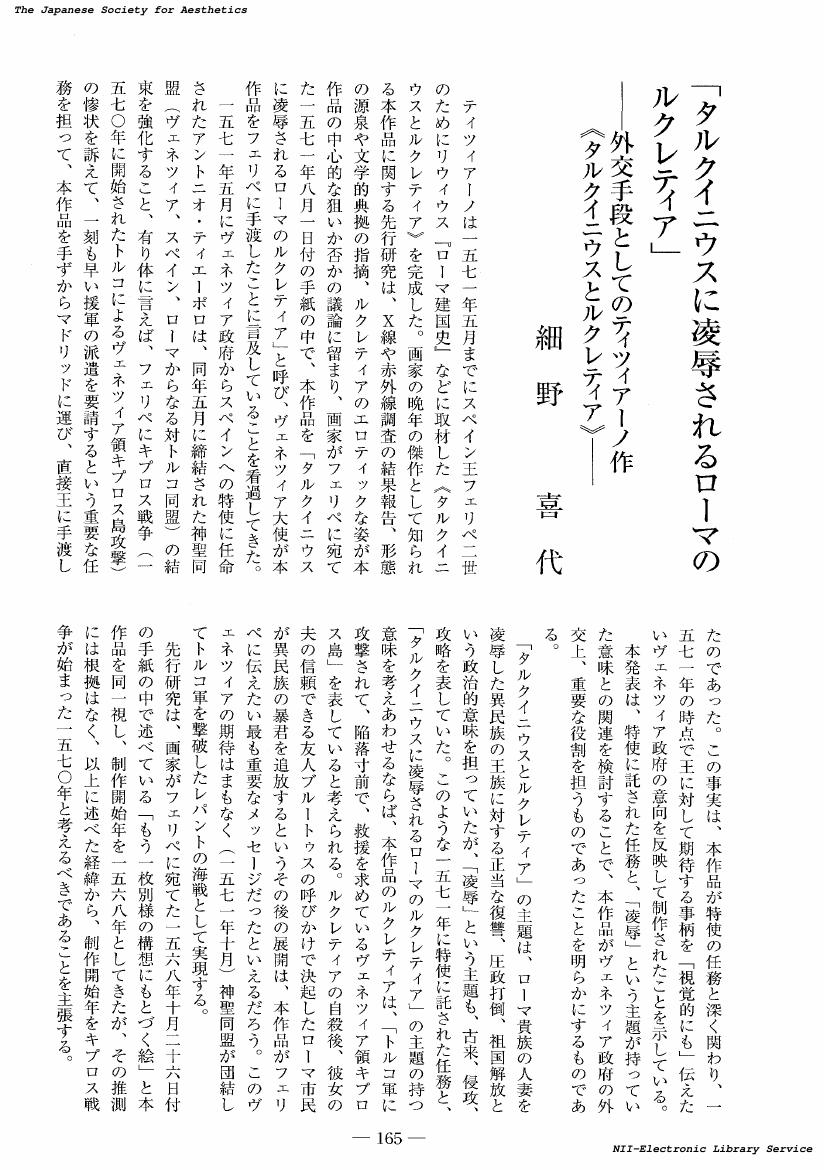- 著者
- Pino Paolo 森田 義之 細野 喜代
- 出版者
- 茨城大学五浦美術文化研究所
- 雑誌
- 五浦論叢
- 巻号頁・発行日
- no.15, pp.29-42, 2008
- 著者
- 細野 喜代
- 出版者
- 美学会
- 雑誌
- 美学 (ISSN:05200962)
- 巻号頁・発行日
- vol.60, no.1, pp.112-125, 2009-06-30 (Released:2017-05-22)
Titian completed the Tarquin and Lucretia for Philip II of Spain in 1571. The painter called the masterpiece "Lucrezia Romana violata da Tarquino" in his letter to Philip II on 1st August 1571. This paper examines the reason why Titian called the painting in this way and the period of its execution. This picture has been considered to be erotic. However, one should pay attention to the fact that the painting was carried from Venice to Madrid in 1571 by a special envoy, Antonio Tiepolo. His mission was to request Philip II to send reinforcements to rescue the Cyprus, territory of Venice, from the attack of Ottomans. In addition to the facts, the story of Tarquin and Lucretia is about a revenge for the royalty of a different race who raped the wife of an ancient roman nobleman, the overthrow of a tyranny and the liberation of the country. Moreover, the subject of the rape has the meanings of invasion and capture. One could think therefore that the painting represents the Cyprus which was asking for help as it was about to fall and it functioned as a diplomatic means for the achievement of Tiepolo's mission. Considering the above circumstances, it seems that Titian embarked on the picture not in 1568 but in 1570 when the War of Cyprus began.
- 著者
- 細野 喜代
- 出版者
- 美学会
- 雑誌
- 美学 (ISSN:05200962)
- 巻号頁・発行日
- vol.59, no.2, pp.165, 2008-12-31 (Released:2017-05-22)
